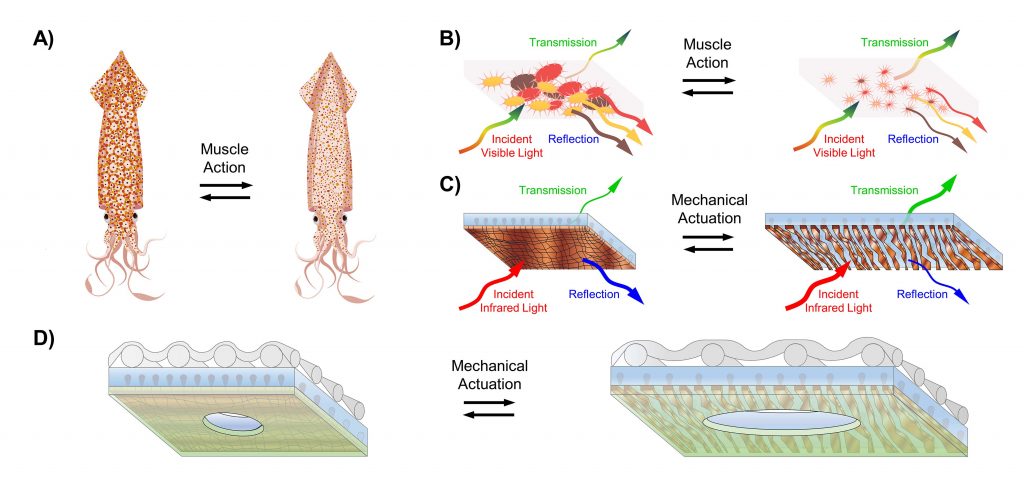New fabric allows for user-adjusted warmth, breathability, and washability.
From the Journal: APL Bioengineering

WASHINGTON, October 1, 2024 – Too warm with a jacket on but too cold without it? Athletic apparel brands boast temperature-controlling fabrics that adapt to every climate with lightweight but warm products. Yet, consider a fabric that you can adjust to fit your specific temperature needs.
Inspired by the dynamic color-changing properties of squid skin, researchers from the University of California, Irvine developed a method to manufacture a heat-adjusting material that is breathable and washable and can be integrated into flexible fabric. They published their proof-of-concept for the advanced bioinspired composites in APL Bioengineering, by AIP Publishing.
“Squid skin is complex, consisting of multiple layers that work together to manipulate light and change the animal’s overall coloration and patterning,” said author Alon Gorodetsky. “Some of the layers contain organs called chromatophores, which transition between expanded and contracted states (upon muscle action) to change how the skin transmits and reflects visible light.”
Instead of manipulating visible light, the team engineered a composite material that operates in the infrared spectrum. As people heat up, they emit some of their heat as invisible, infrared radiation (this is how thermal cameras work). Clothing that manipulates and adapts to this emission and is fitted with thermoregulatory features can finely adjust to the desired temperature of the wearer. The material consists of a polymer covered with copper islands, and stretching it separates the islands and changes how it transmits and reflects infrared light. This innovation creates the possibility of controlling the temperature of a garment.
In a prior publication in APL Bioengineering, the team modeled their composite material’s adaptive infrared properties. Here, they built upon the material to increase its functionality by making it washable, breathable, and integrated into fabric.
The team layered a thin film onto the composite to enable easy washing without degradation — a practical consideration for any fabric. To make the composite material breathable, the team perforated it, producing an array of holes. The resulting product exhibited air and water vapor permeability similar to cotton fabrics. The team then adhered the material to a mesh to demonstrate straightforward fabric integration.
Using Fourier transform infrared spectroscopy, the team tested the material’s adaptive infrared properties and used a sweating guarded hot plate to test the dynamic thermoregulatory properties. Even with simultaneous thin-film layering, perforations, and fabric integration, the materials’ heat-managing performance did not suffer.
“Our advanced composite material now opens opportunities for most wearable applications but may be particularly suited for cold weather clothing like ski jackets, thermal socks, insulated gloves, and winter hats,” said Gorodetsky.
In addition to the possible applications for the fabric, the manufacturing process the team used to develop the fabric is also full of potential.
“The strategies used for endowing our materials with breathability, washability, and fabric compatibility could be translated to several other types of wearable systems, such as washable organic electronics, stretchable e-textiles, and energy-harvesting triboelectric materials,” said Gorodetsky.
###
Article Title
Authors
Sanghoon Lee, Erica M. Leung, Mohsin Ali Badshah, Aleksandra Anna Strzelecka, and Alon Gorodetsky
Author Affiliations
University of California, Irvine
